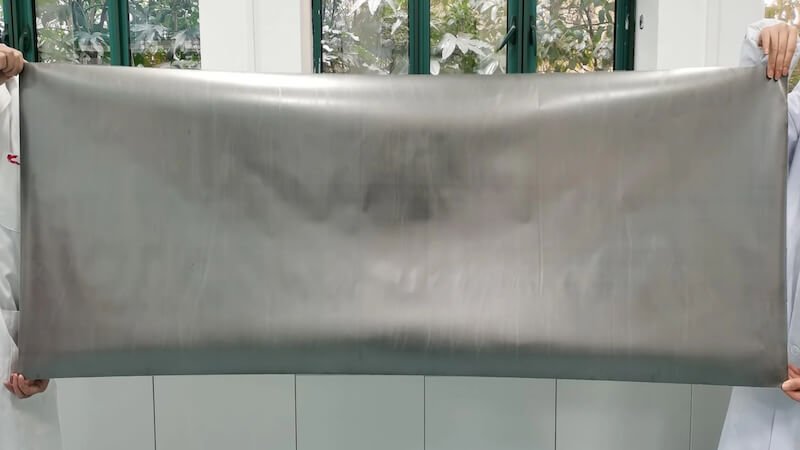
An international team of researchers has succeeded in producing a defect-free graphene film that is said to have enormous thermal conductivity. This should significantly increase the performance and safety of lithium-ion batteries.
Batteries play an important role in the energy transition. Researchers around the world are therefore working on improving common methods. A team of researchers from Swansea University, Wuhan University of Technology and Shenzhen University recently made an interesting discovery. They developed a method to produce defect-free graphene foils on a large scale.
These are expected to significantly improve the safety and performance of lithium-ion batteries (LIBs) because they offer exceptional thermal conductivity and durability. This could particularly advance electromobility, as it could also increase the efficiency and service life of batteries.
Graphene foil with enormous thermal conductivity
The novel method enables the production of graphene foils with a thermal conductivity that is almost ten times higher than that of conventional copper and aluminum collector structures. This can make a significant contribution to reducing the risk of overheating in batteries and increasing energy density. One of the biggest challenges in the development of LIBs is so-called thermal runaway.
This process often leads to overheating, battery failure and potentially dangerous explosions. The new graphene collection structures are designed to minimize these problems by efficiently dissipating heat and containing exothermic reactions. They are designed to block the formation of flammable gases and prevent oxygen from entering the battery cells.
Film is very flexible and therefore widely applicable
According to the researchers, this should significantly increase safety and minimize the risk of dangerous battery failure. An important advantage of the technology is its scalability. The researchers produced a 200-meter-long graphene foil that retained its conductivity after more than 100,000 bends.
This opens up a wide range of application possibilities in flexible electronics and advanced energy storage systems. Future developments could focus on redox flow batteries and sodium-ion batteries. In addition to classic lithium-ion batteries, there are many other materials that could be important for future energy systems.
Also interesting:
Source: https://www.basicthinking.de/blog/2024/09/11/graphen-sammelstrukturen/


